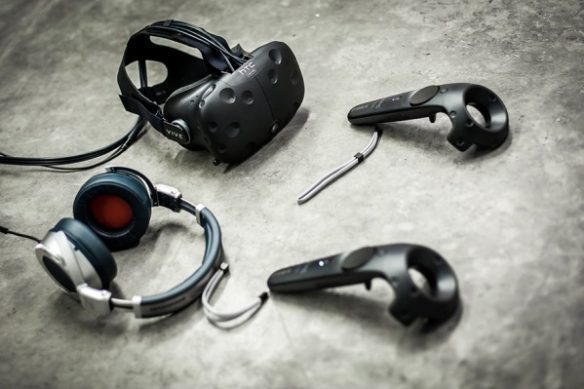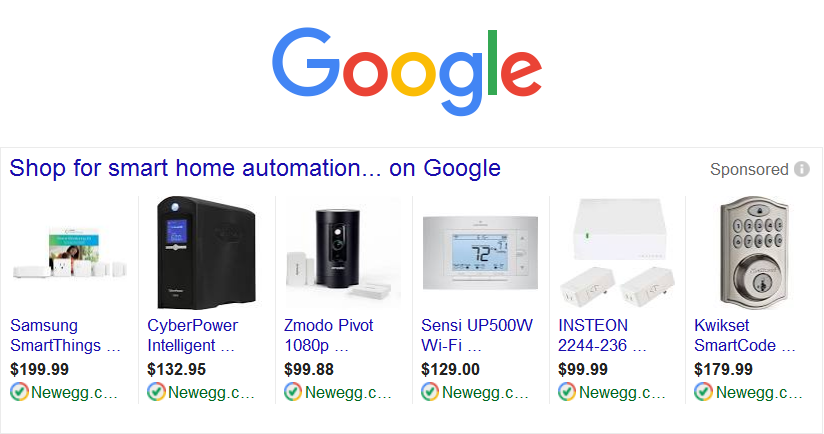Automated thermostats, technology embedded in your clothing and virtual reality: Are these fictions from an alternate universe or the future of consumer electronics?
As a tech marketplace, Newegg has a vested interest in the latest technological innovations. We are finely in tune with what trends are becoming prime market opportunities for our customers and sellers alike.
In this post, we look at the emerging tech that may alter the course of e-commerce — and history — as we know it.
Emerging Tech in the Smarter Home of Today: IoT & Home Automation
The Internet of Things (IoT) has been expanding quickly in the past couple years, and it continues to gain steam as the technology becomes more familiar to the general public. IoT relates to the networking of physical objects, so that they can communicate with one another to share data. The idea is that objects we wouldn’t typically think of as having “smart” capabilities now have sensors, chips and other electronic components built in to enable connectivity and use on a wider scale.

Home Automation has expanded quickly in recent years.
One of the most popular uses of this technology so far is home automation. Home automation has varying levels of adoption and difficulty of installation. But the ultimate goal is to make complete control of the home easier. Simple upgrades can be as easy as installing “smart” light bulbs that can be operated from a mobile app. Or you can get as complicated as connecting hundreds of devices to a central hub, while enabling mobile notifications and control by users and other devices.
While this idea of integration has been around a while, its popularity is rapidly increasing due to consumer demand for a more tech-centric lifestyle and more energy efficiency in the home. The home automation industry is a great opportunity for retailers and branded manufacturers to tap into a burgeoning market that is expected to reach$12.81 billion by 2020. Some of the most popular products in the field are in the lighting, access control, surveillance and HVAC categories.
The different protocol that these devices use to communicate is important to note. There are multiple languages used among home automation items, and making sure the language is compatible with other products is critical when setting up a connected home. Customers will need to have all the same protocol for devices to speak with one another, or use a hub or products with Apple Home Kit to enable cross-protocol conversations. The protocols most commonly used are Wi-Fi, Zigbee, and Z-Wave.
Properly leveraging content is important when selling these products, because the application needs to be clearly explained. There are buckets of technical details that are also critical to their use, so having content that answers all customer questions will help convert on these items more often. The tech of home improvement isn’t slowing down any time soon, so having a foothold in the earlier stages, and being able to get your products in front of shoppers, will be paramount to success.
The Blend of Man & Machine: Wearables
You could say that wearable technology originated in the 1980s with the advent of the calculator watch. In recent years, wearable technology has become far more advanced, and as a result more popular.
The recent explosion of companies like Fitbit has prompted many other tech manufacturers to pursue the adoption of wearable technology with user-friendly interfaces, from fitness tracking to smartphone extensions. The release of products from Samsung, Apple, Pebble and Motorola, along with the development of numerous apps, has pushed the consumer tech industry to become even more focused on individual and personal needs. This fuel for “on-the-go tech” will continue to reach well beyond the wrist, as we are already seeing sports apparel incorporate technology to monitor vitals, track performance and analyze data points.

The recent explosion of companies like Fitbit has prompted many other tech manufacturers to pursue the adoption of wearable technology.
This adaptation of technology to provide an acute benefit to the individual has prompted companies to customize products specific to consumer needs as they change.
At this year’s Consumer Electronics Show (CES), Samsung announced the development of a smart belt (WELT) that monitors the user’s waistline, counts steps throughout the day and monitors overeating while automatically adjusting the tension of the belt. This information, of course, is all fed into an app that can be analyzed by the user.
The future of wearable technology is bright, and as the industry develops outward from the activity tracking, we will see many more applications. Industries like medical, toys, entertainment and others are already experimenting with the technology.
A Look into the Future: VR/AR
The virtual reality (VR) and augmented reality (AR) industries are very new, with opportunity for entry before they fully develop. According to a recent Goldman Sachs research report, VR/AR will be an $80 billion industry by 2025!
Virtual Reality
While the idea of a virtual world is not brand-new, the emerging tech that has made it reality is cutting-edge. Virtual reality is a complete 3D envelopment in the viewing experience with a total detachment from a user’s actual surroundings. Through and optics headset and headphones, all the senses are immersed in a virtual world. This type of experience is primarily targeted toward the gaming industry, as many gamers are early adopters of technology.

Gaming technology is the tip of the consumer electronics spear.
A large percentage of Newegg customers are gamers, and express massive interest in VR products. The automotive sector, medical field and entertainment industry are all highly attractive sectors for the fully immersive experiences of VR.
This past year has brought huge developments from HTC Vive and Oculus Rift, the two main competing VR gaming ecosystems. Both began shipping at the end of March/early April. With these new developments, there are many other ecosystems of hardware and accessories that offer vast opportunities to capture sales. An especially relevant point is that the VR ecosystems require state-of-the-art PCs. As a result, merchants selling VR-capable equipment have the chance to capitalize on the demand for customers upgrading their machines.
Augmented Reality
Augmented reality takes digital content and overlays it onto actual reality, for a hybrid of live events and superimposed imagery. The benefit of this type of technology is the instant access to content. Not just more content, but targeted content as it relates to the geographic or situational context the user is experiencing. Imagine seeing restaurant reviews and menu options as you walk past on the street. Or even viewing automotive diagnostic manuals as you repair a vehicle. Furthermore, AR technology additionally enables users to interact with designs in a way never before possible. This can allow engineers, architects, designers and medical professionals to work on models without the limitation of size, weight, cost. Any physical limitations for that matter that inhibited these professionals, may no longer be a factor.
Google Glass provided users access to this technology for a limited time. In the aftermath of the scrapped project, Microsoft’s HoloLens looks to fill the AR void in the near future. As you read this, developer editions of the HoloLens are in beta testing.
Today’s emerging tech most of all is the foundation for the advancements of tomorrow. And from what we are seeing, there are limitless possibilities within these emerging sectors.
As the utility of these inventions develop, and the application spreads to more of the population, consumer demand will skyrocket. As a result retailers and manufacturers have new revenue streams, as the emerging technologies of today become tomorrow’s standards.
Newegg is dedicated to riding the forefront of the technological wave, and most of all tapping into our customers’ interests. Because of this we are cemented as the largest and premium tech-centric marketplace in North America.







